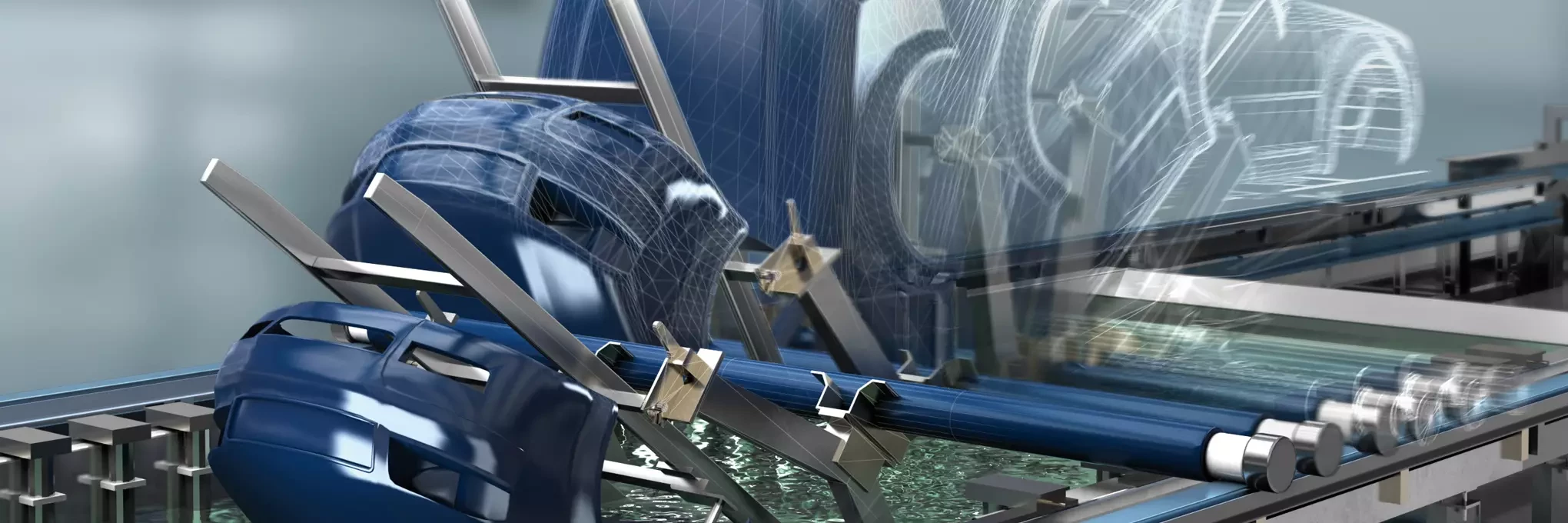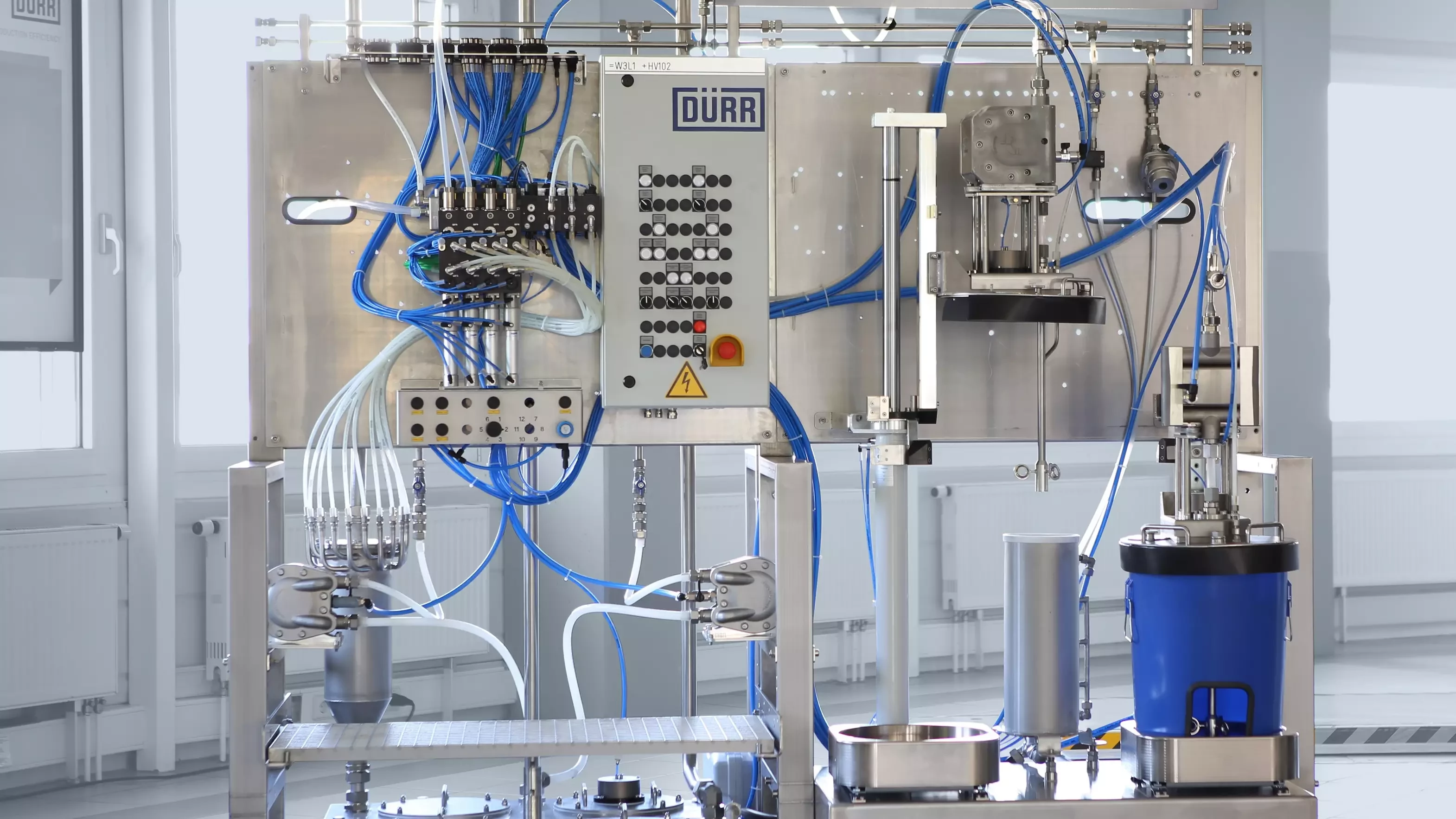Dip, flood, drain: even very large car bodies, such as those of transporters and vans, can rotate around their own axis with a rotational movement of 360°. When planning the plant in North Charleston, Dürr conducted extensive tests in its technical center. This included testing ways of using the RoDip® rotational dip process for painting larger car bodies than had ever been immersed before. The result? RoDip® guarantees high-quality corrosion protection as a basis for further surface coating, even for large vehicles.
The Ecopaint RoDip® E version will be used in the Mercedes-Benz Vans paint shop in North Charleston, that is currently under construction. The system with electrical drive will transport the closed car bodies of the next generation of the Mercedes-Benz Sprinter through pretreatment (PT) and cathodic electro-coating (EC). Each of the freely programmable transport units has a separate drive for rotation in addition to the conveying drive.
The individually programmable transport units enable optimized dip curves for the respective car body. The end result is better coating quality and increased energy efficiency. The rotational process means that smaller bath volumes are possible; these need less chemicals and fresh water and at the same time reduce the energy consumption and volume of wastewater.
Following pretreatment, the seam sealing, underbody protection, and rocker panel protection are applied within a single zone. These combined tasks are performed by four rail-mounted EcoRS robots with the new generation of the EcoGun2 3D applicator. This standardized applicator is suitable for all applications, from spraying insulating material to sealing seams. The EcoGun2 3D is much more streamlined and lightweight than its predecessor model, making it ideal for getting into even hard-to-access areas of the body shell.
The fully automated interior and exterior painting steps are performed cost-effectively in their own zones in stop and go mode using a special atomizer of the type EcoBell3 HX designed for painting detailed and exterior surfaces. Interior painting in the cargo space is performed by non-rail-mounted swingarm robots. With their extended arms, they are specially designed for use in large cargo spaces. This is the first time they are being installed in this form in the USA.
Vans have a large number of different colors applied to them. In order to be able to apply this variety with minimal paint loss during paint changes, the robots are connected to the EcoSupply P special paint supply system with pigging technology.
EcoSupply P special paint supply system ensures a wide range of paints and minimal losses.
The semi-automatic system EcoDry X for dry separation of the overspray in the paint booths requires absolutely no water or chemicals. This system, designed for simplicity and robustness, works on the basis of cardboard filters. The paint shop equipped entirely by Dürr also includes paint application with primer and 2-wet process for topcoat.
Mercedes-Benz Vans announced its plans to extend its existing assembly location for vans and build a new factory for the production of the Mercedes-Benz Sprinter in North Charleston in South Carolina (USA) back in 2015. Production is due to start before the end of the decade. Up to now, Sprinters for the USA will be manufactured in Germany. Due to high import duties, however, they will be partially disassembled in a complex process and reassembled in the plant in North Charleston.
According to Daimler this additional step puts Mercedes-Benz Vans at a clear competitive disadvantage on the US market. The new factory and vehicles “made in USA” will enable the division to service the growing demand from North American customers much more economically in the future, and significantly reduce the delivery times in the market. The division is therefore investing around USD 500 million in the construction of the factory. Mercedes-Benz Vans is the only manufacturer in the large transporter segment that is still manufacturing in Germany (Düsseldorf and Ludwigsfelde).


